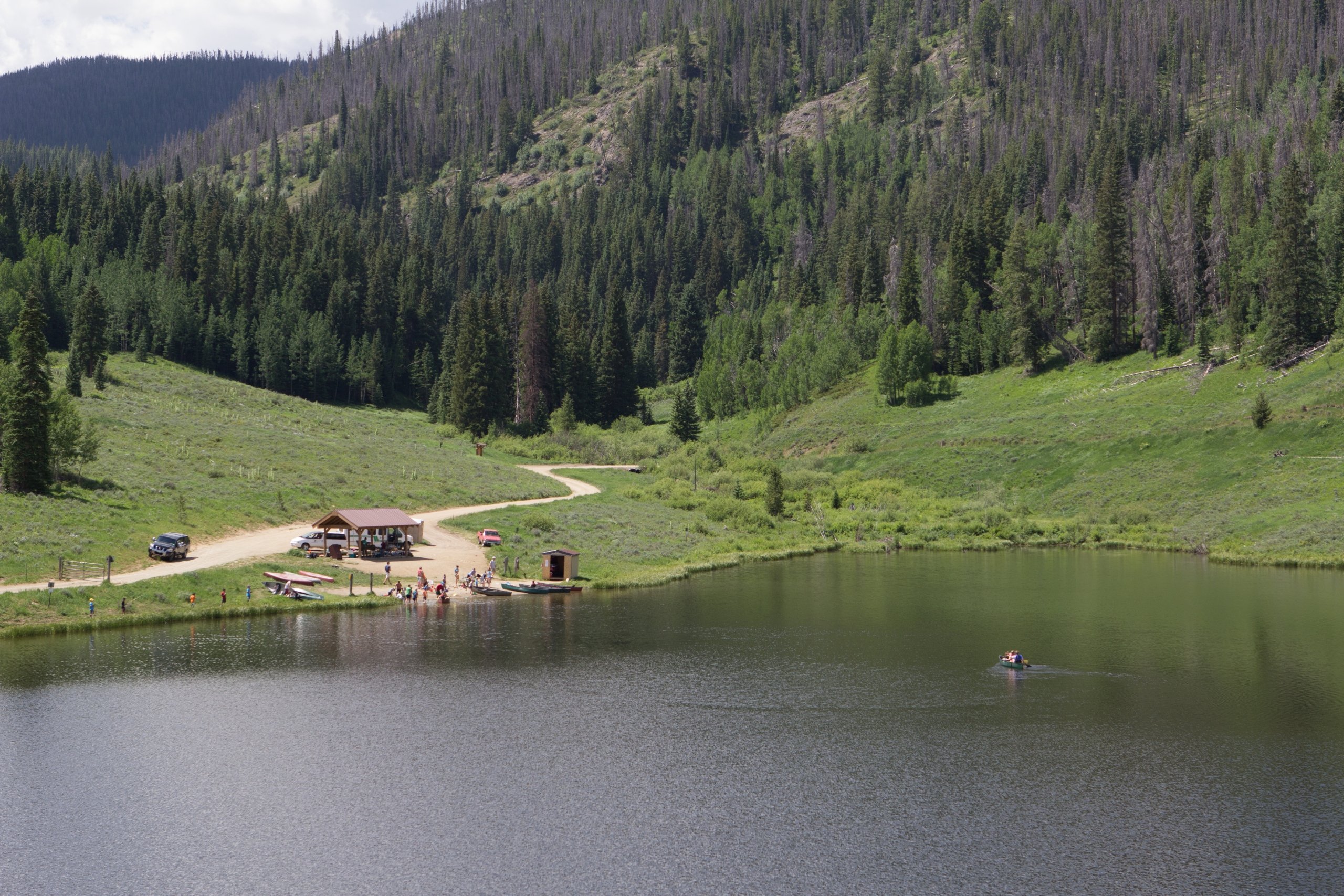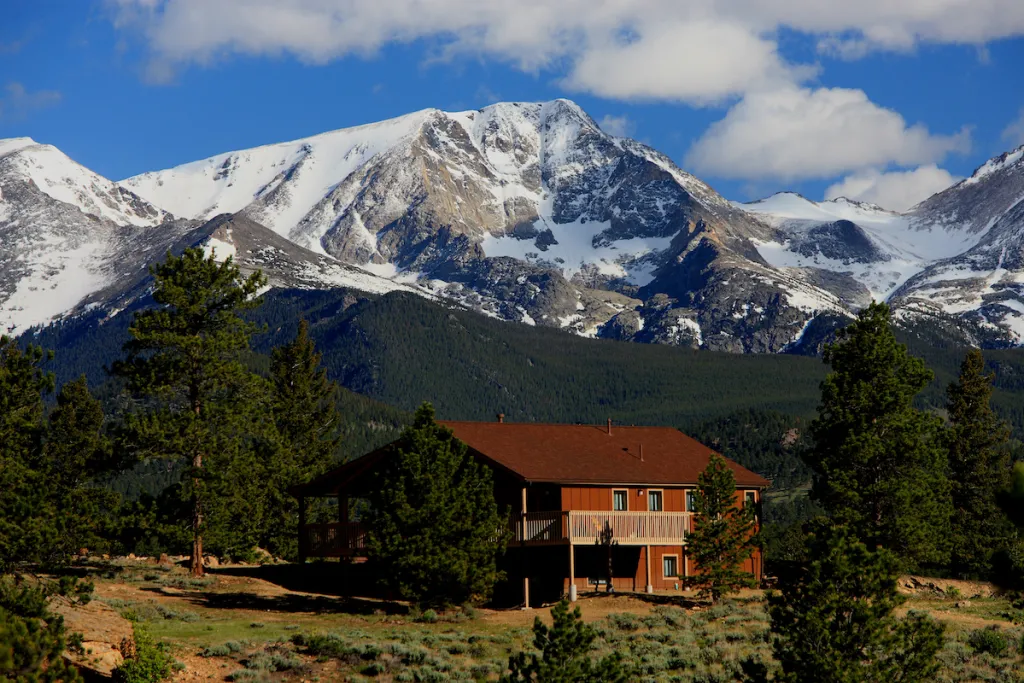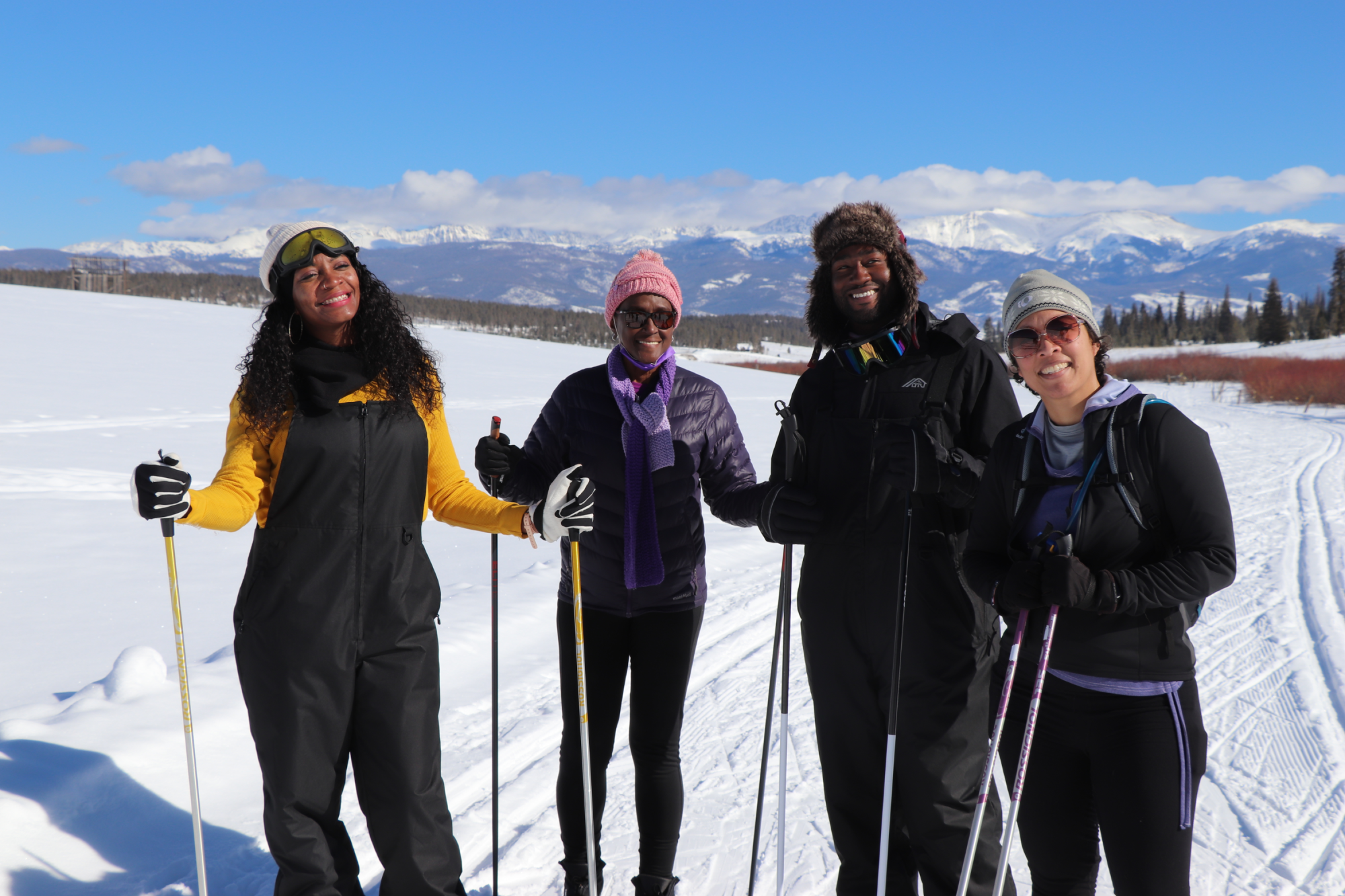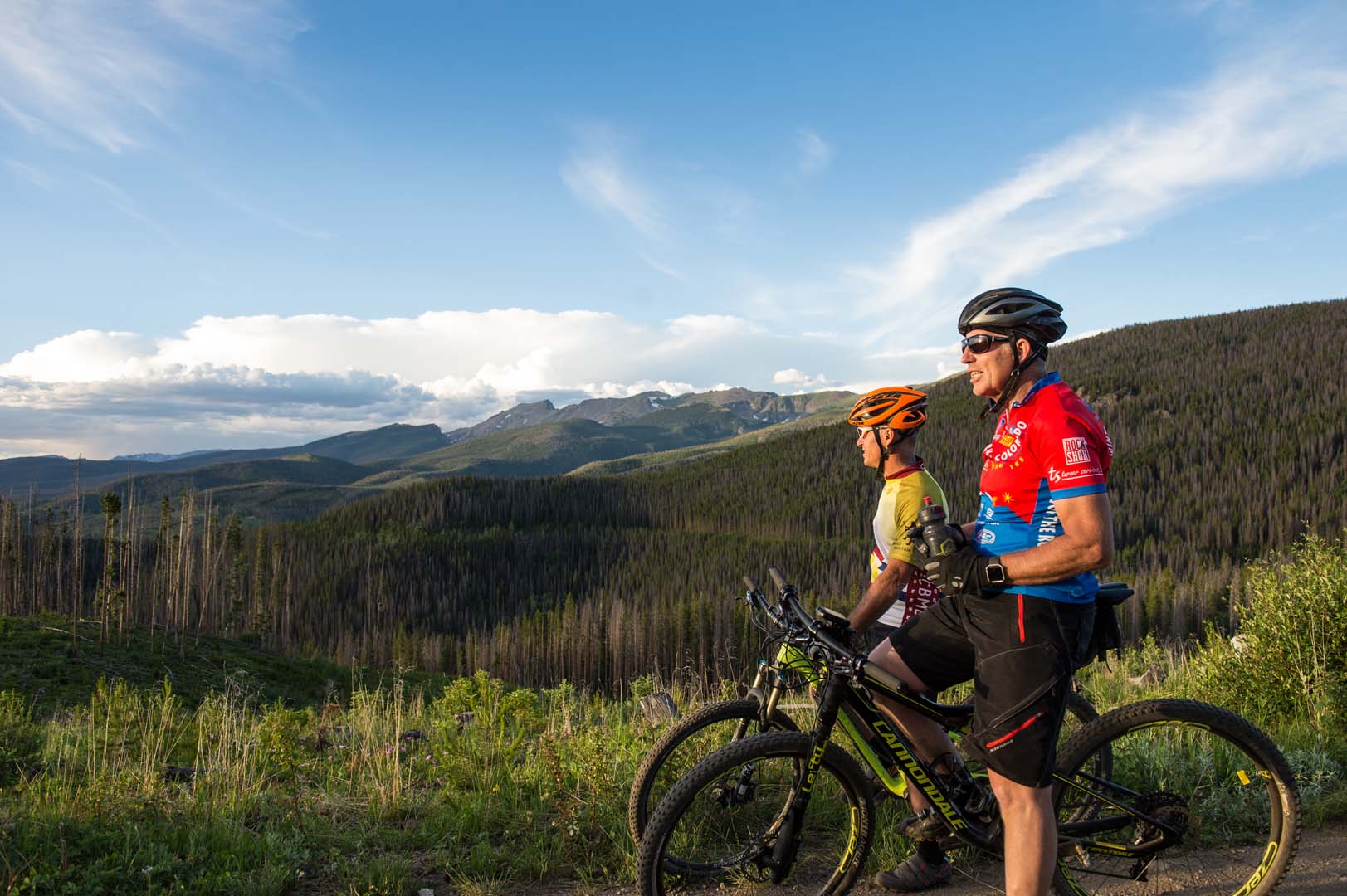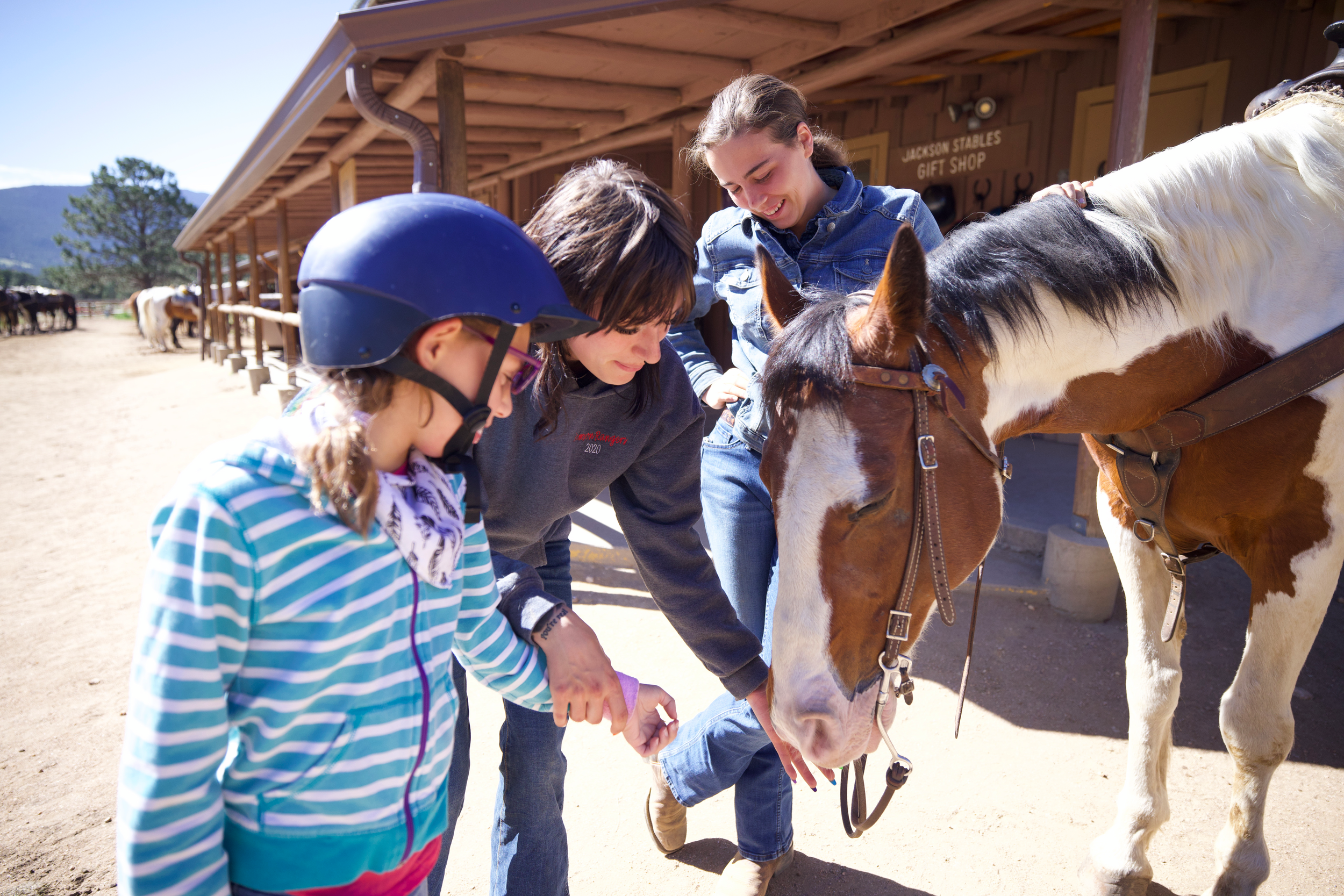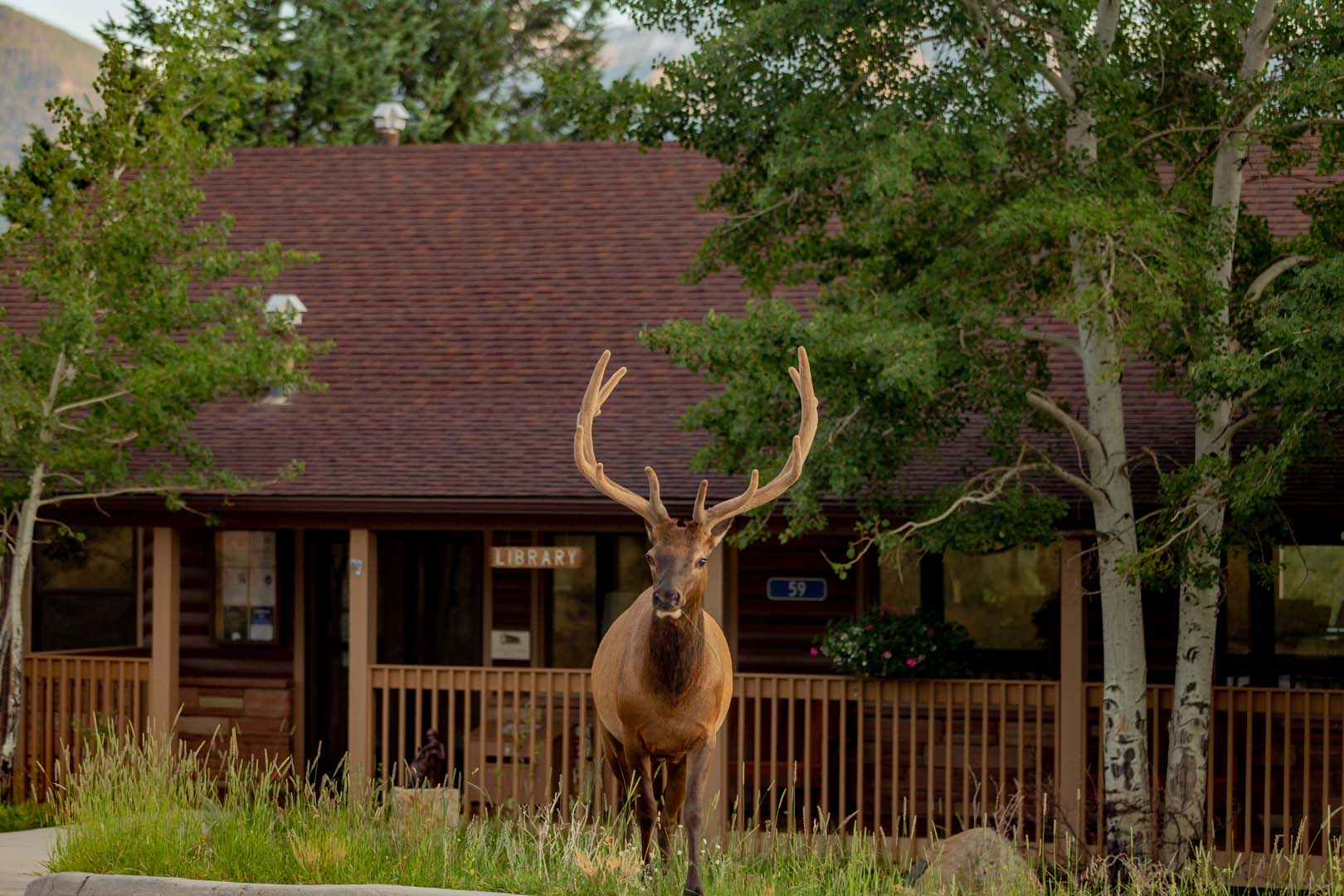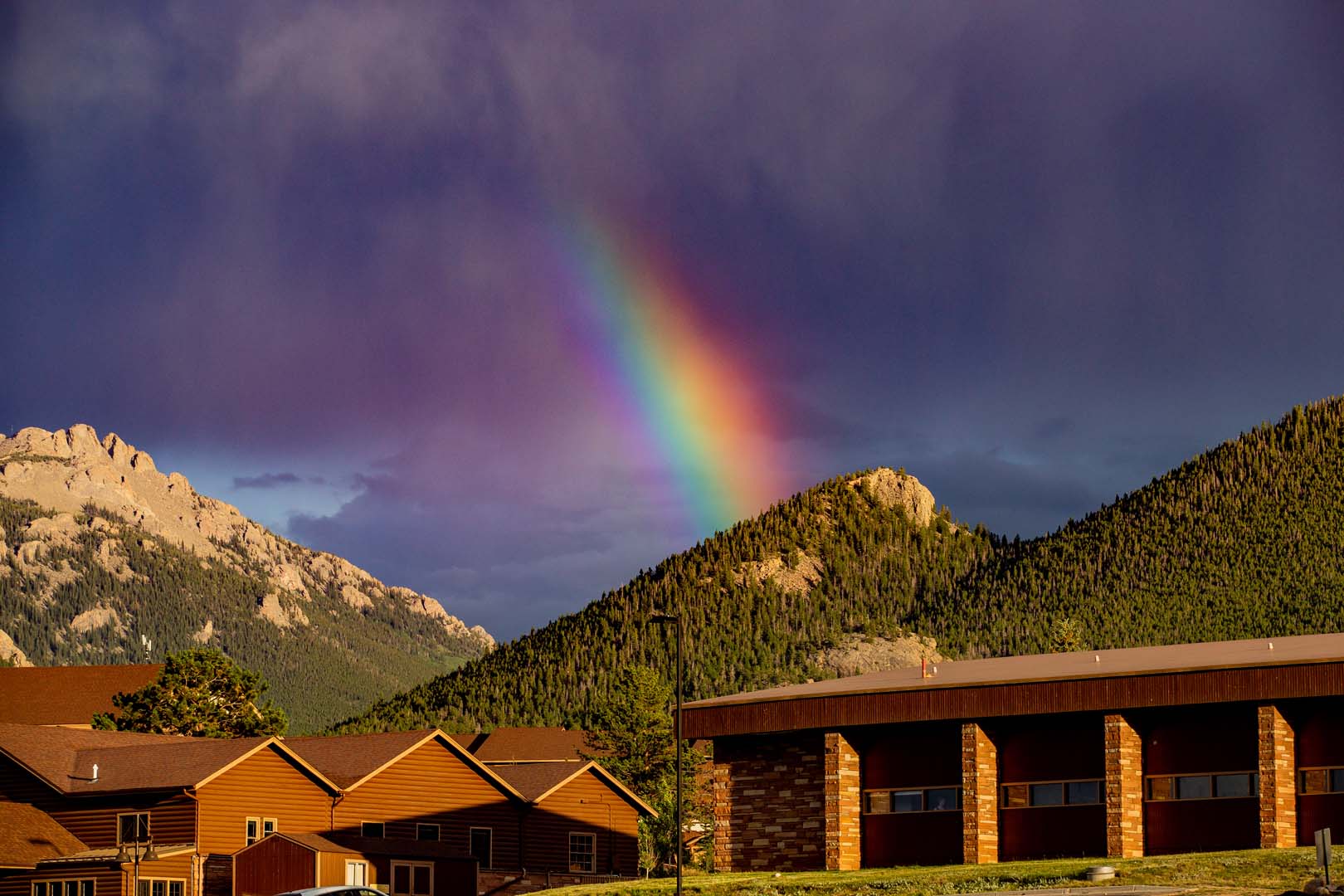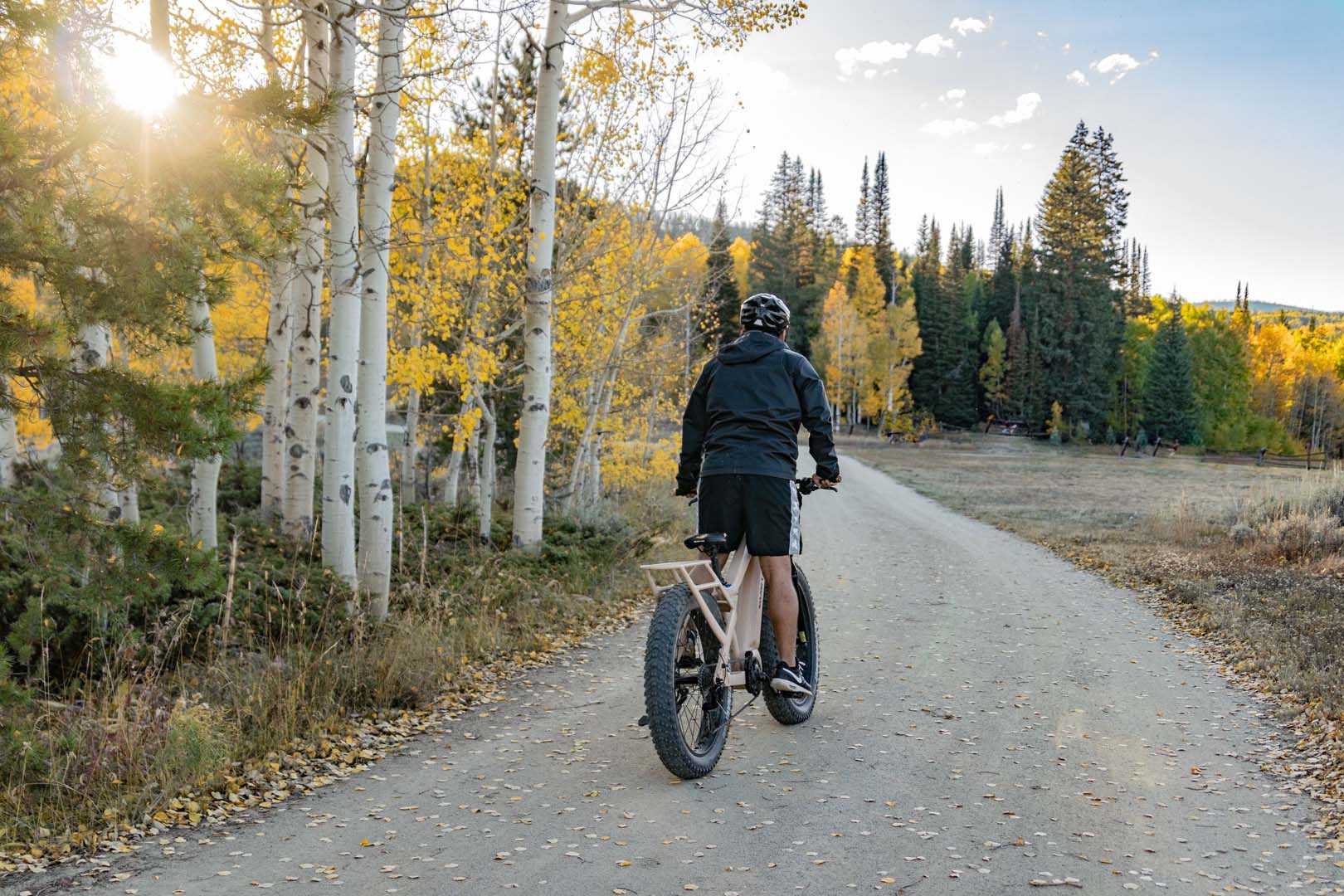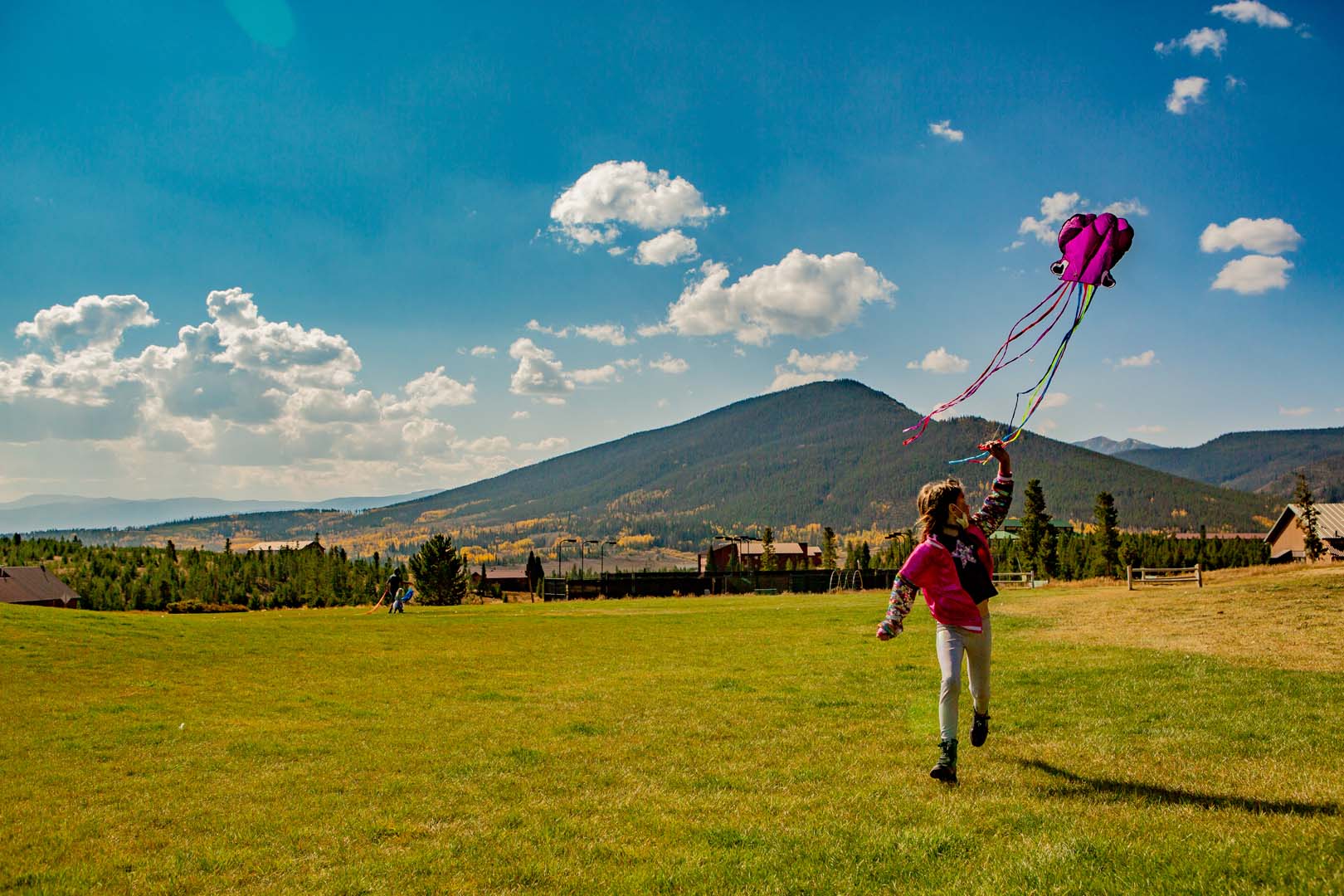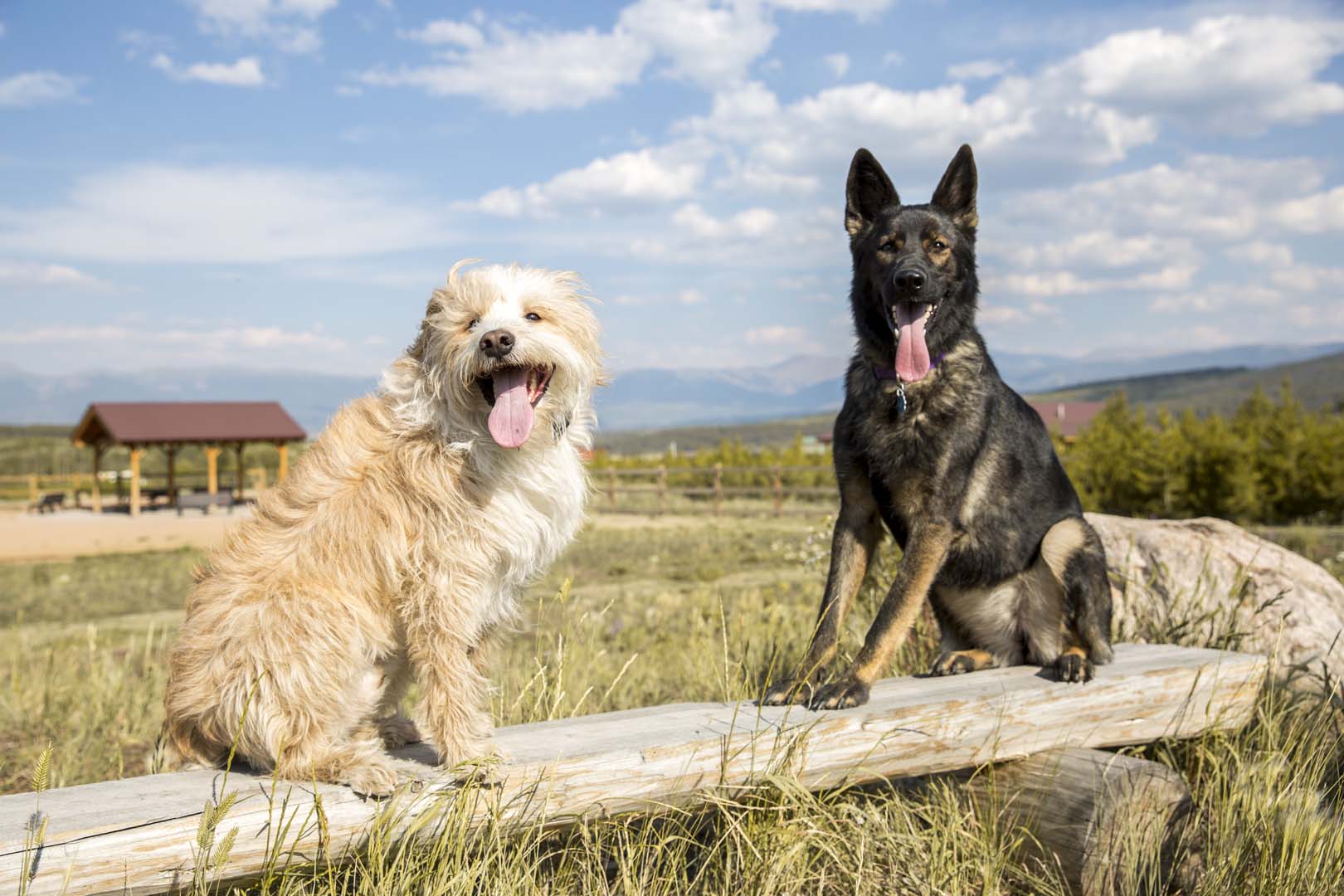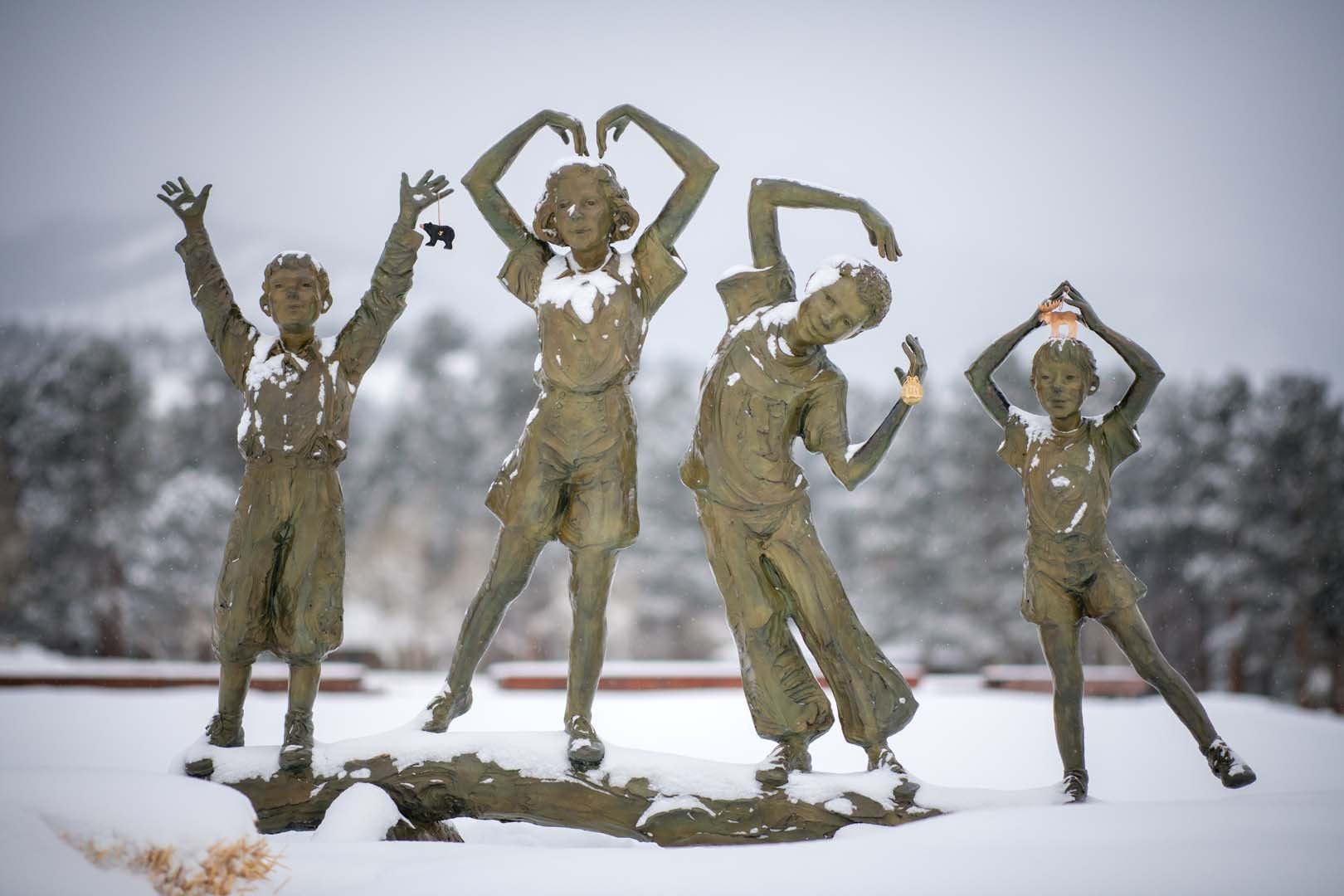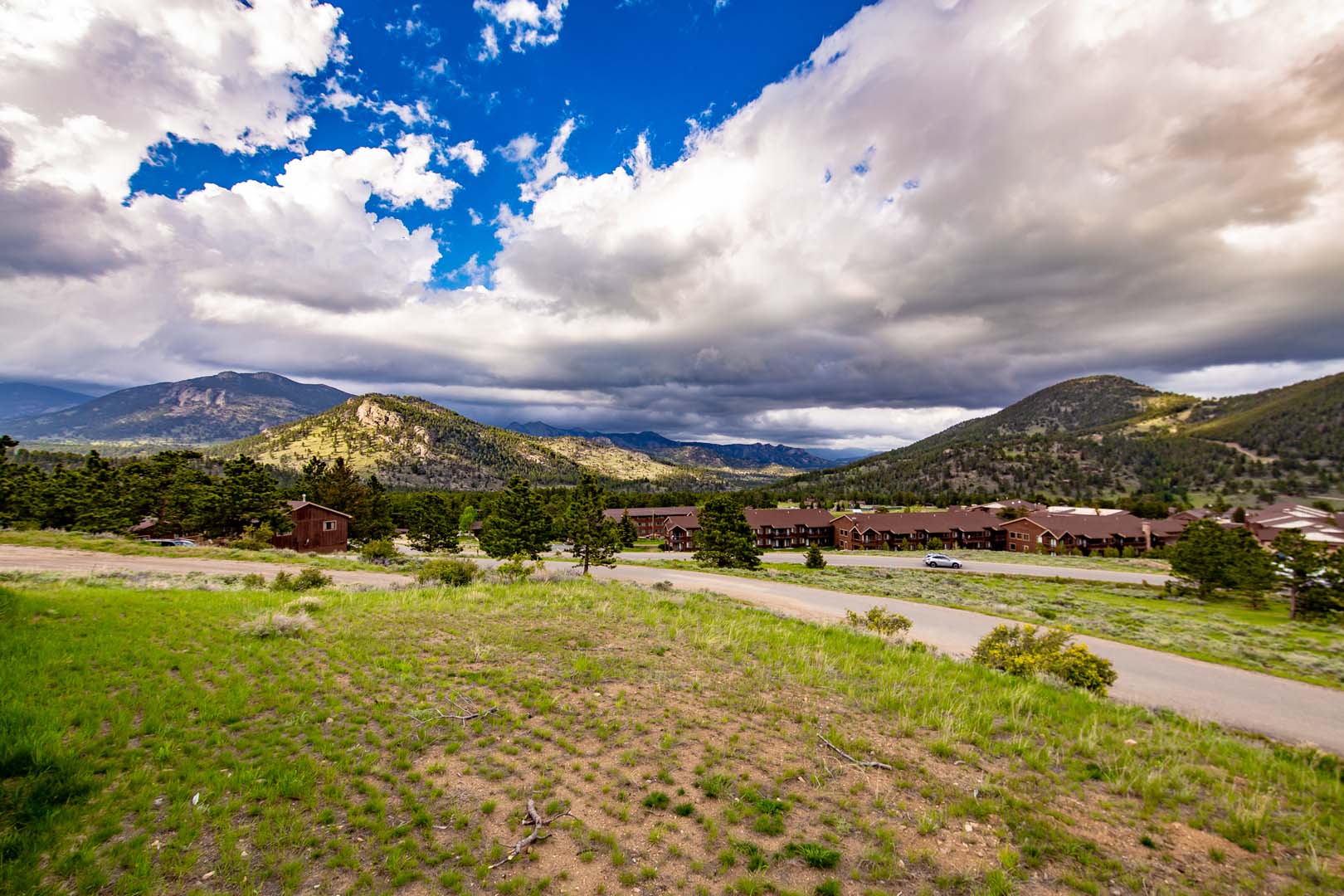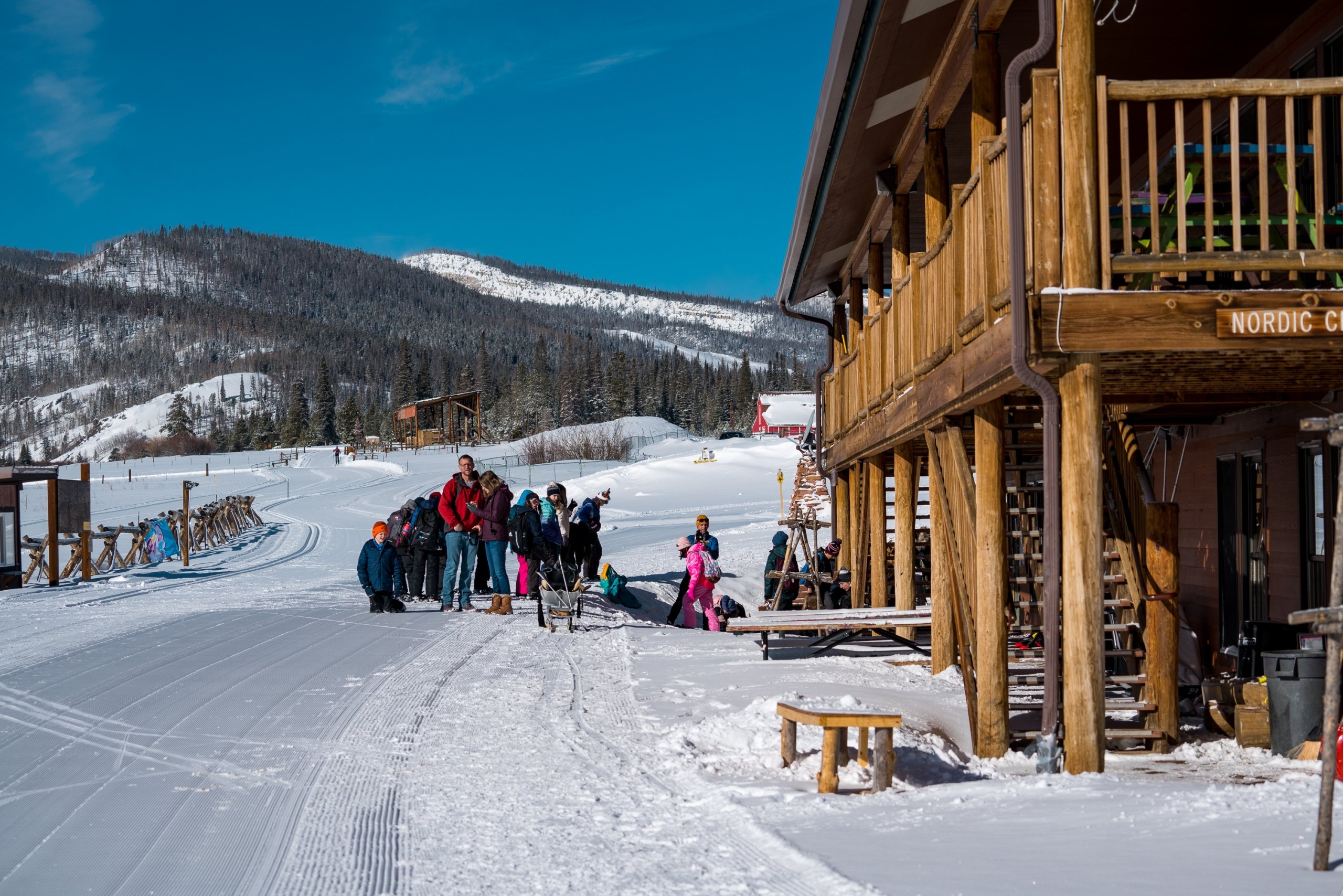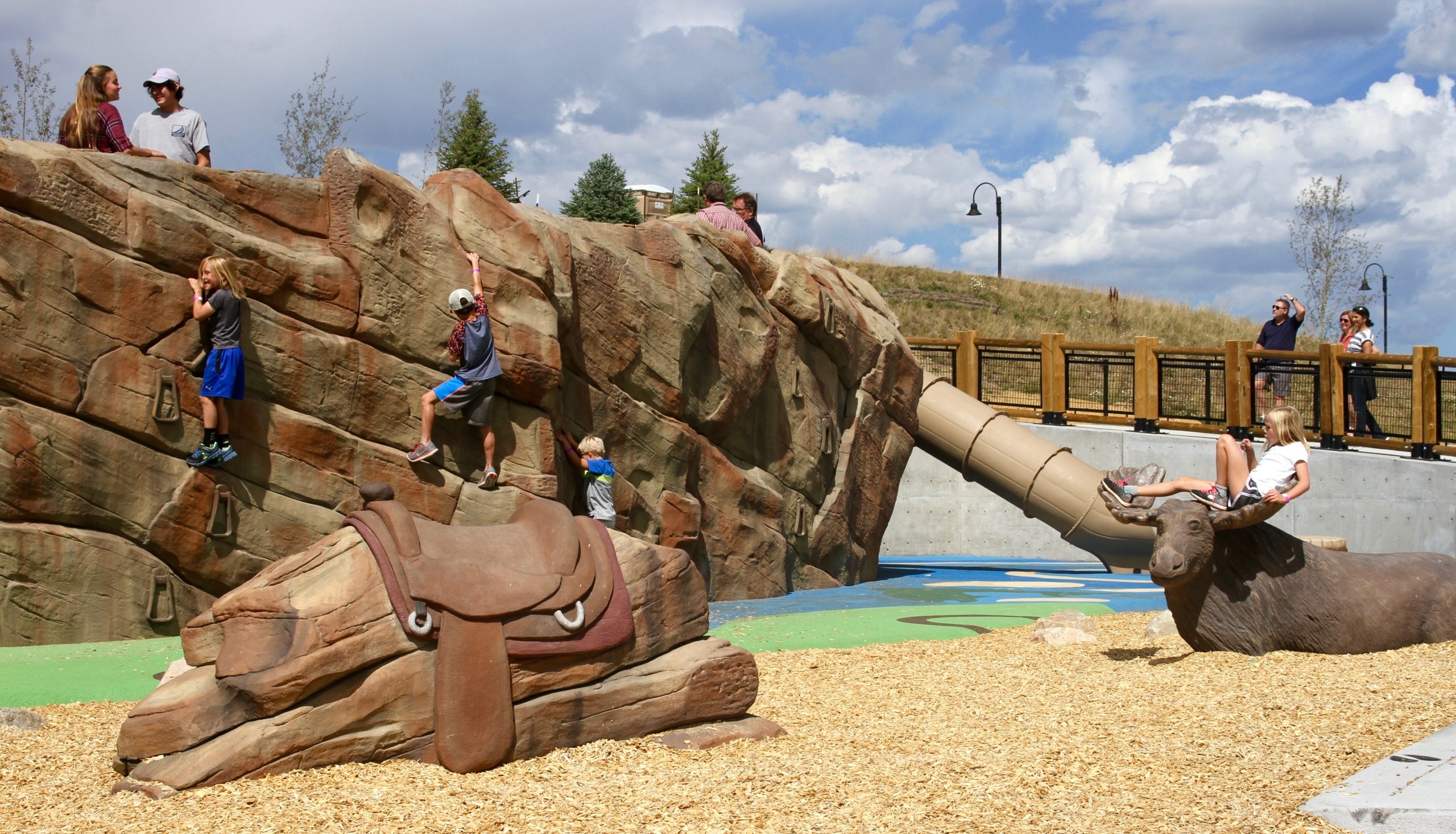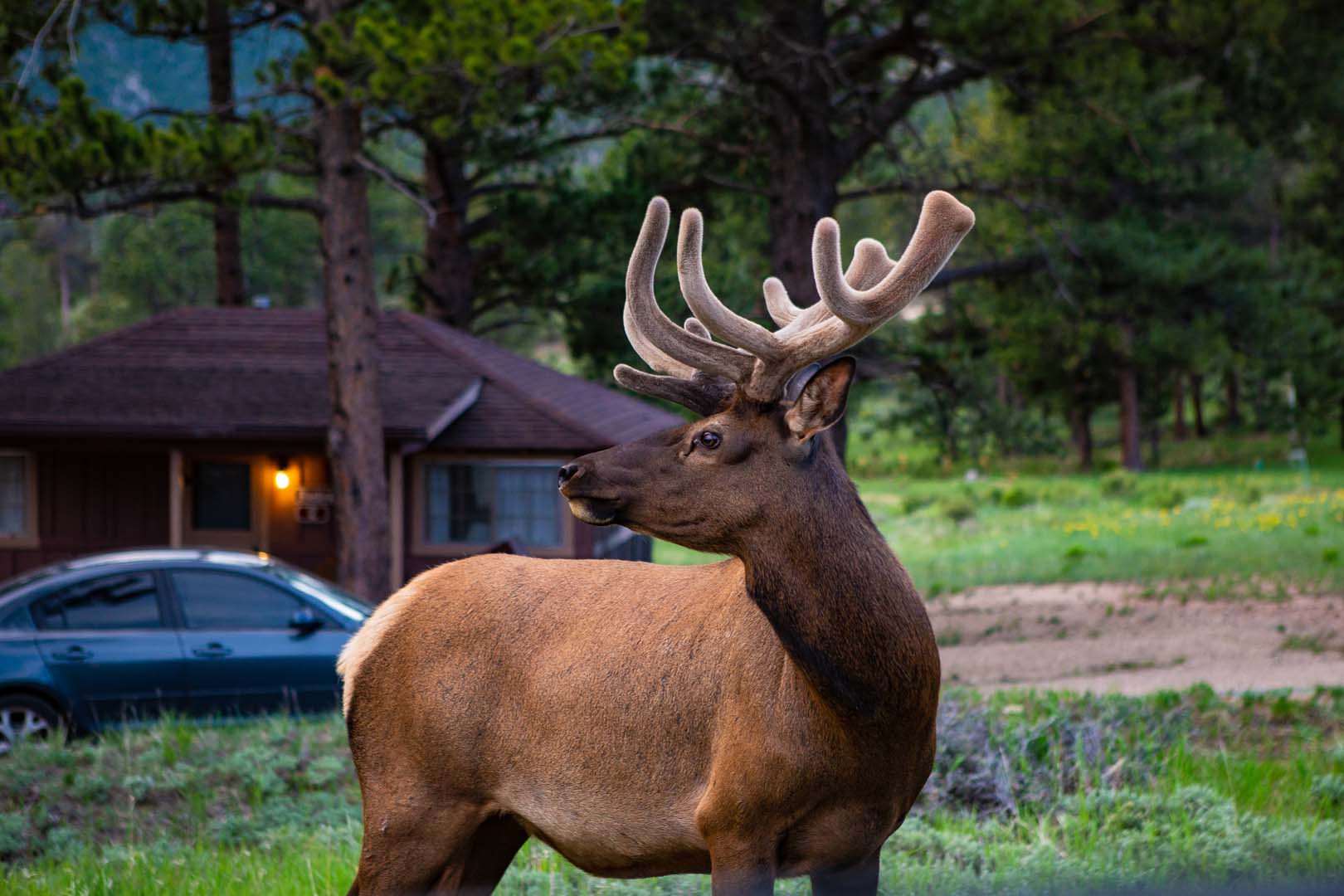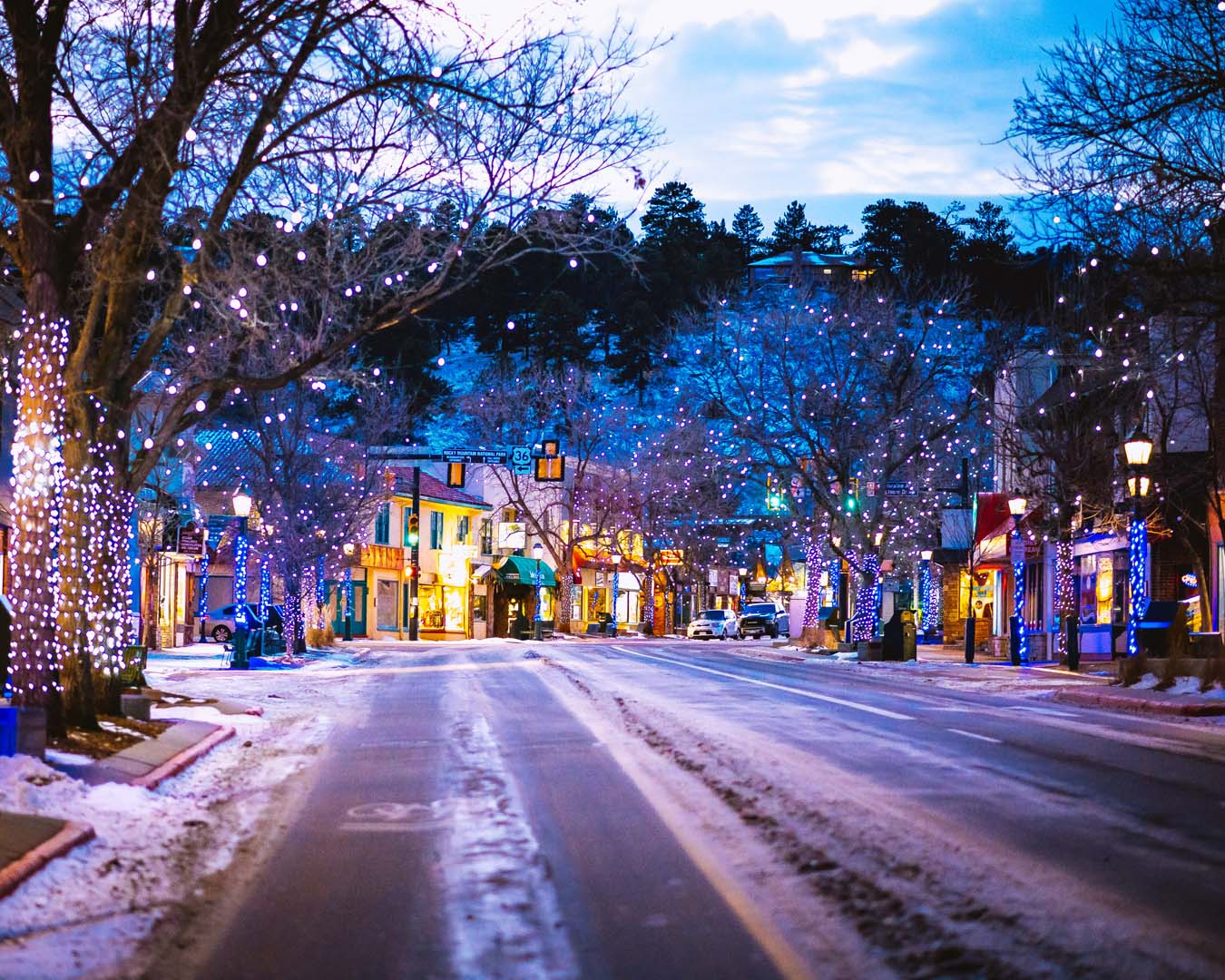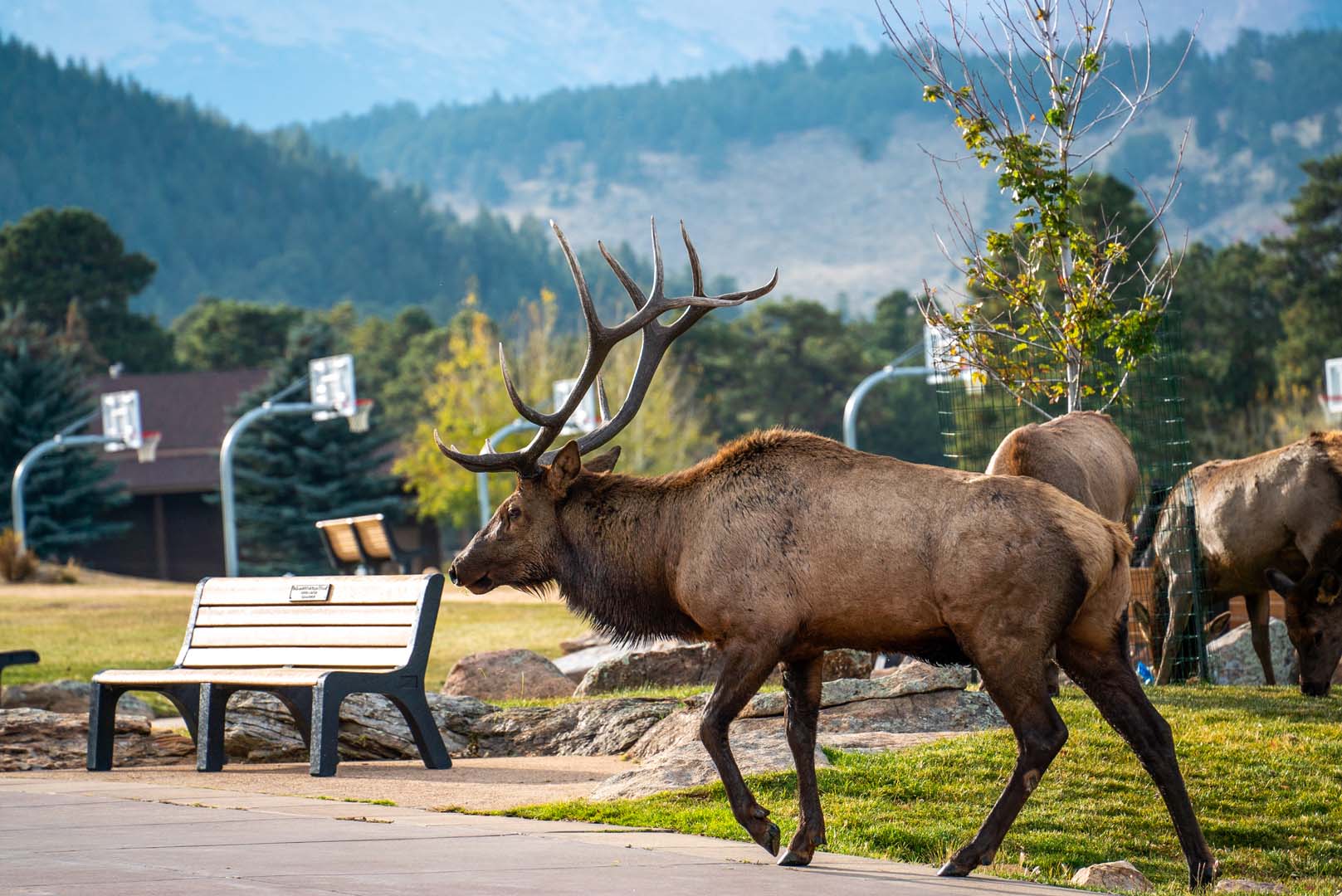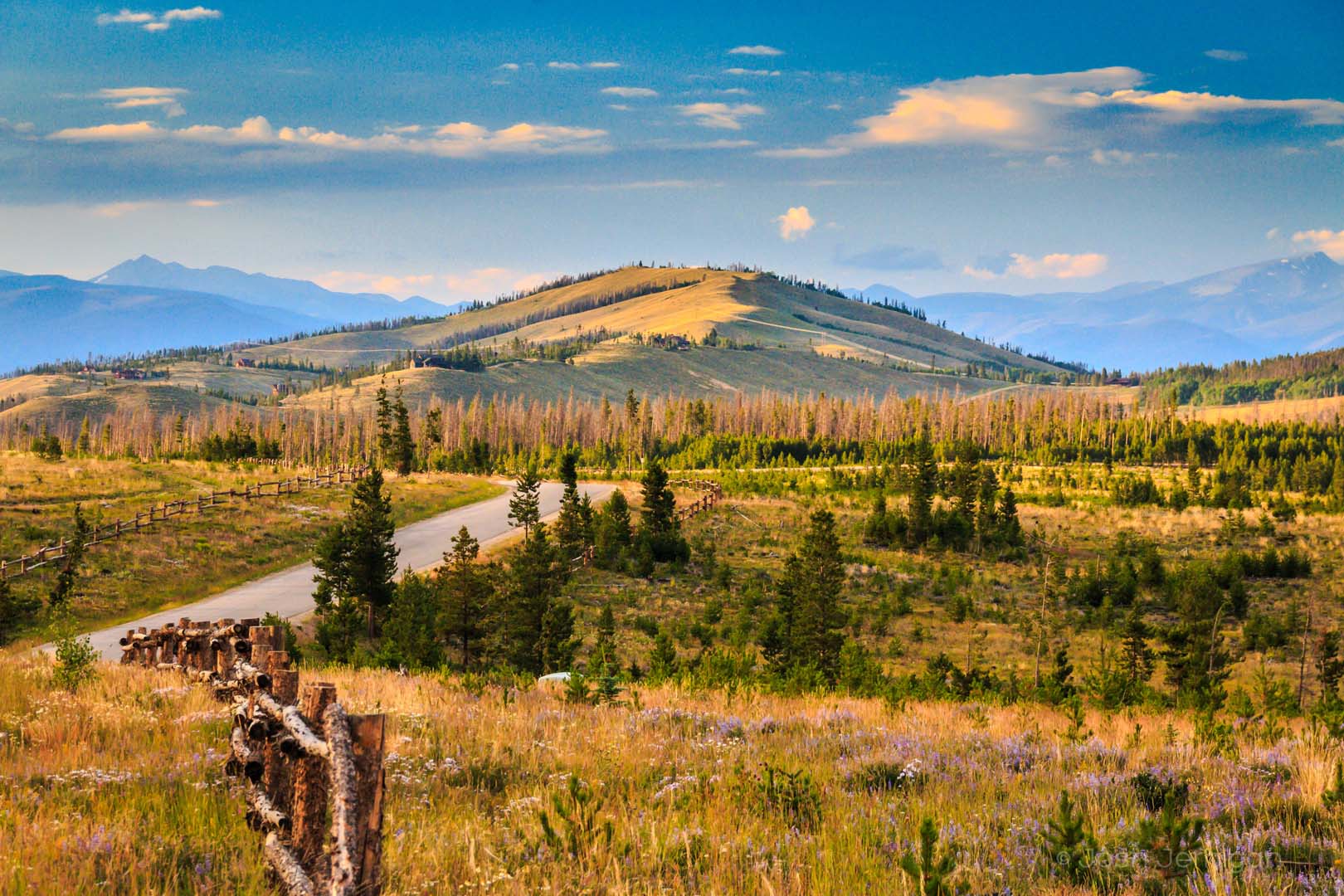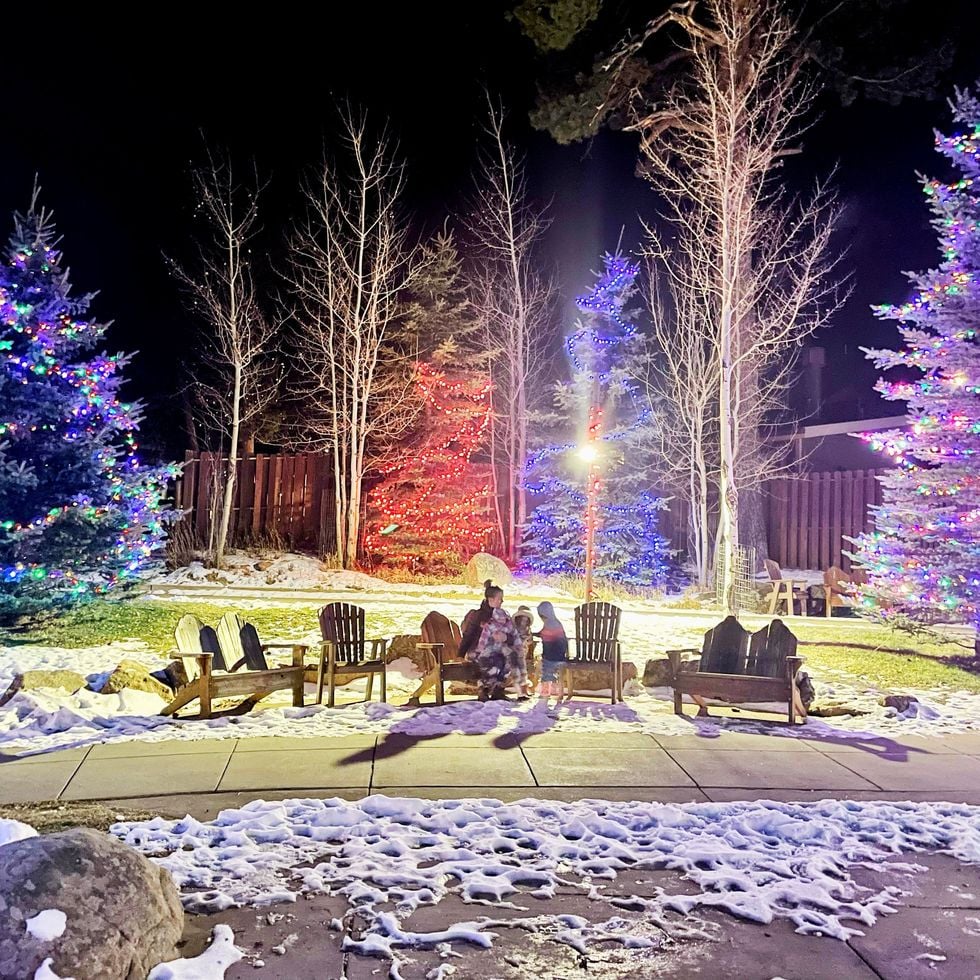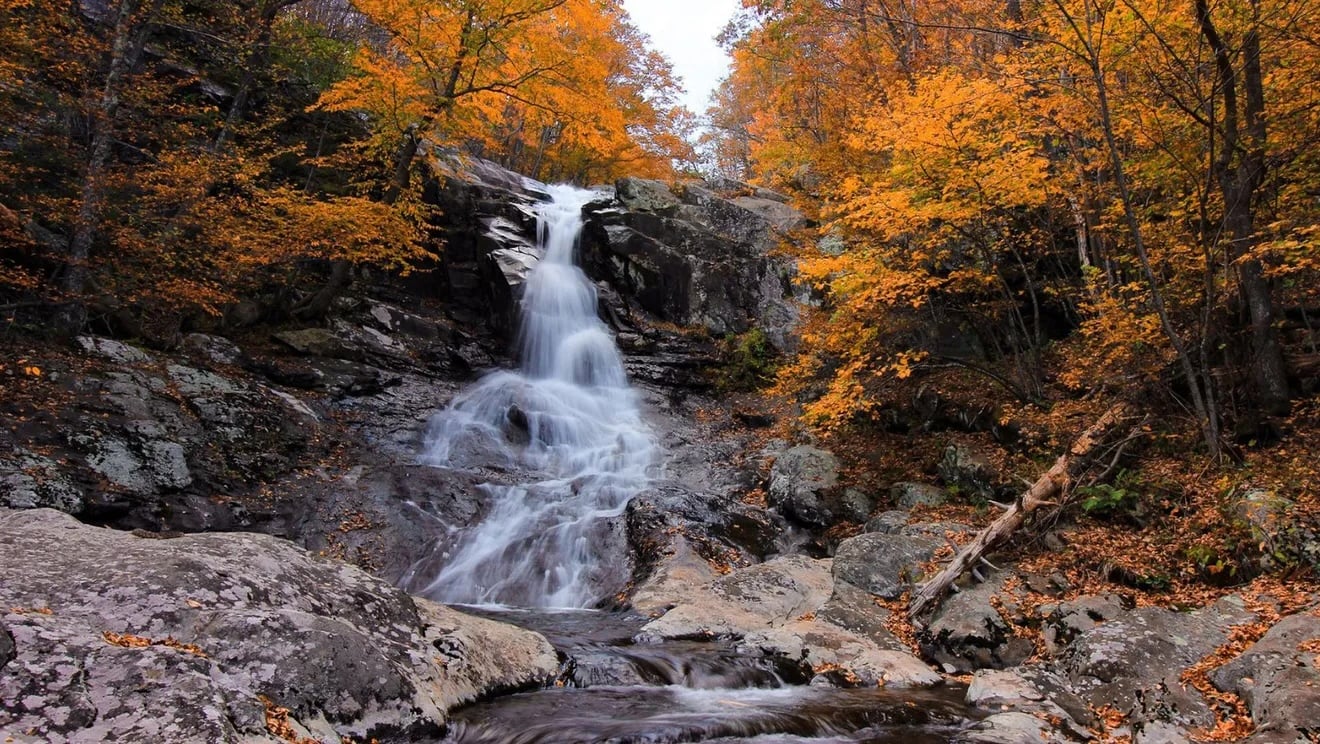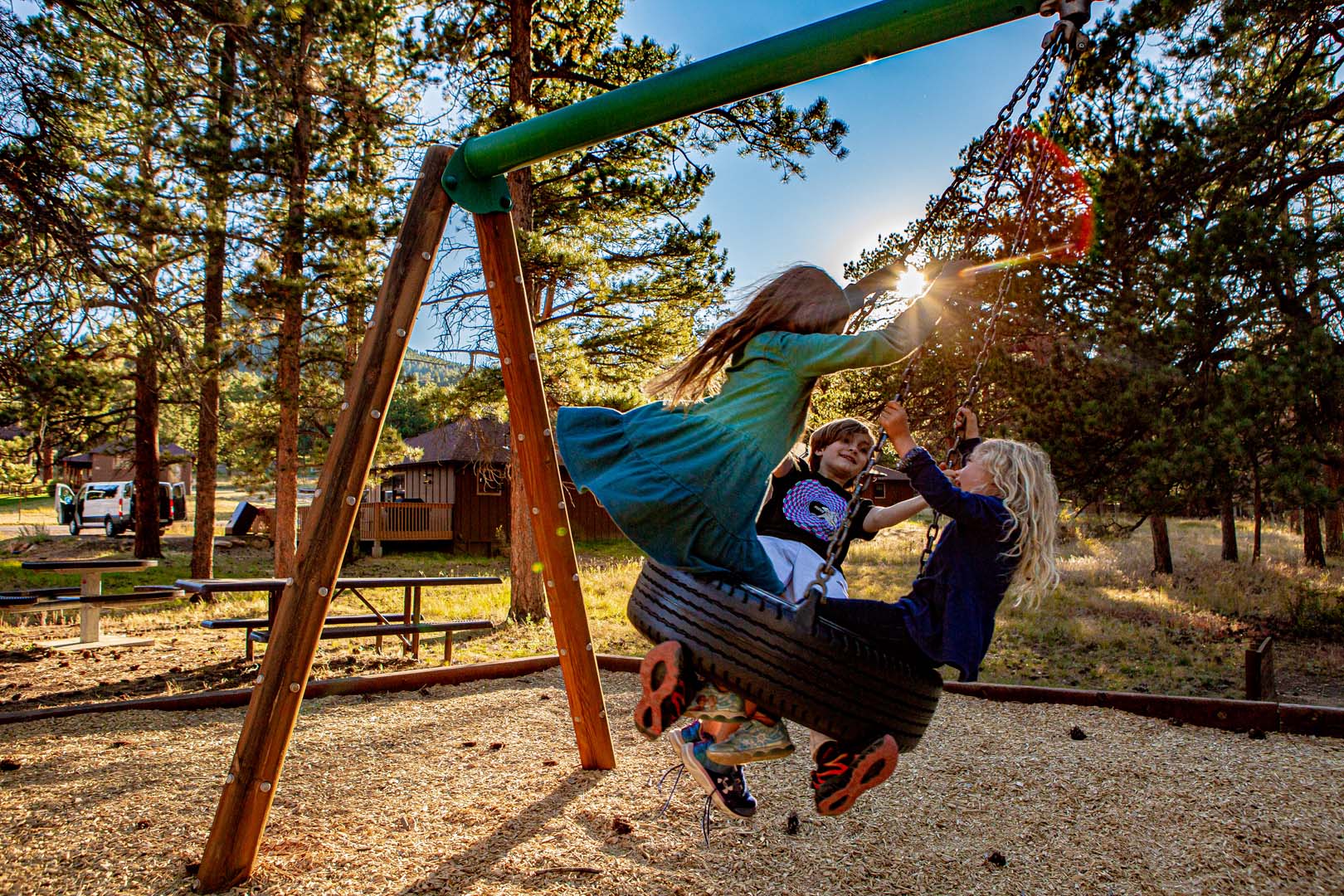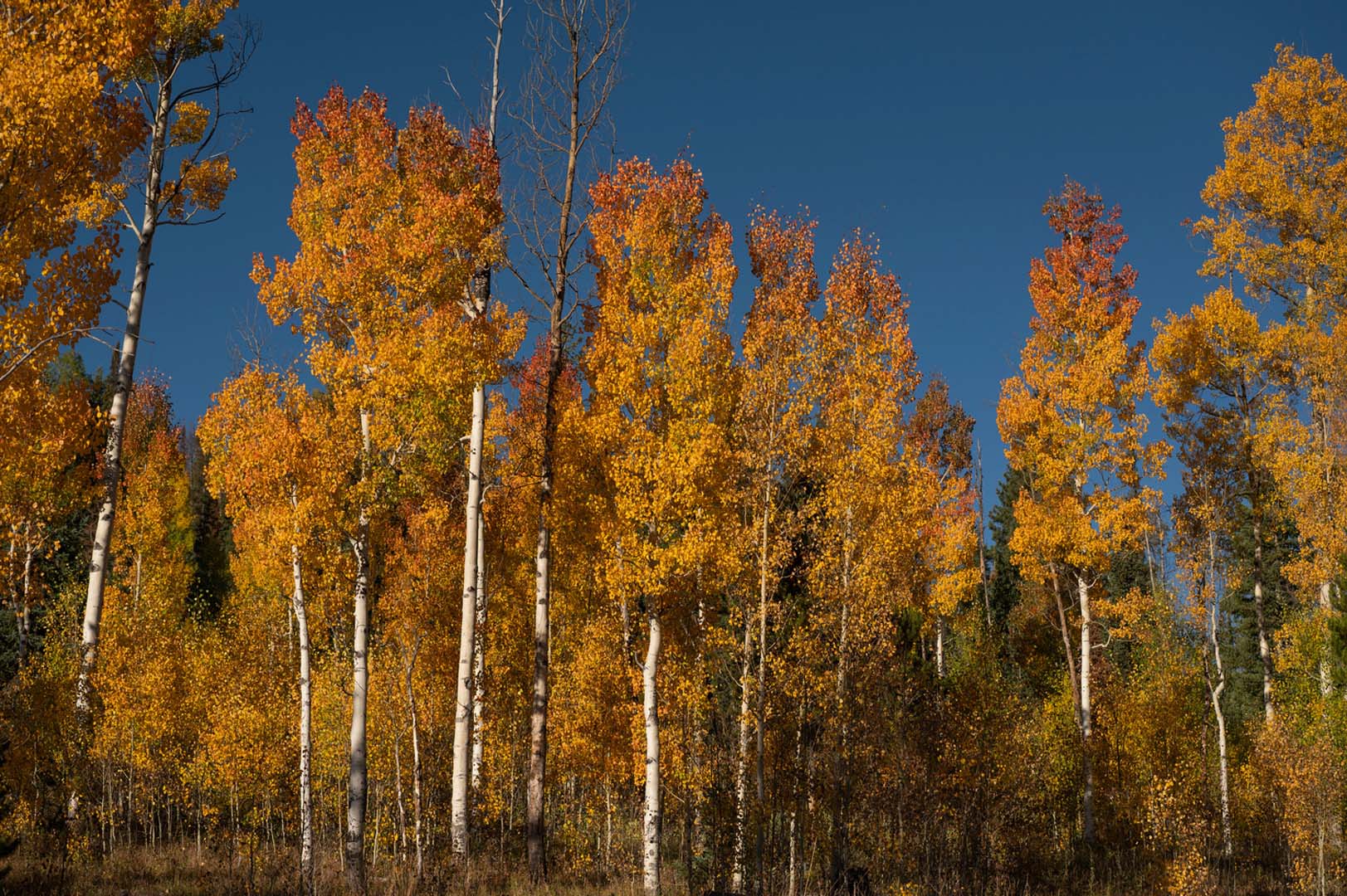
Celebrating 50 Years Of Earth Day and Conservation
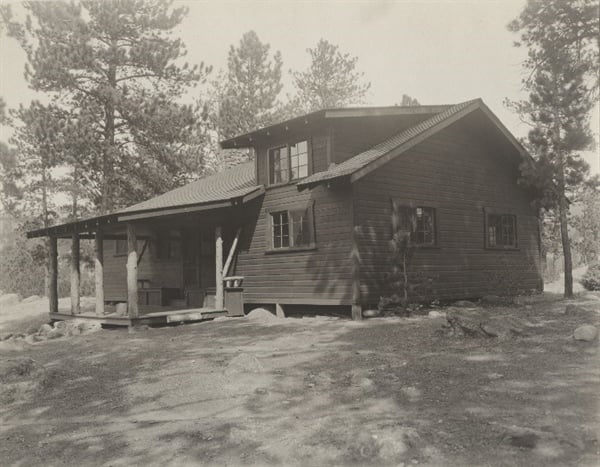
At YMCA of the Rockies, we are blessed to work in the beautiful Rocky Mountains of Colorado.
As we follow public health orders to social distance from each other, to remain in place, and to restrict our travel plans to locales close to home in an effort to contain the spread of COVID-19, our thoughts invariably take us to a future when we can return to the outdoors, when we can visit our favorite public lands or come back to YMCA of the Rockies. During times of stress and sadness we often find peace and comfort as we bathe in the smells and sounds of the natural world. At YMCA of the Rockies, we are blessed to work in the beautiful Rocky Mountains of Colorado where we can find renewal and inspiration, and we are fortunate that our founders made the conscious decision to find land that would allow visitors to renew their spirits. In honor of the 50th anniversary of Earth Day, I took a stroll through our archives to explore how nature and YMCA of the Rockies are intrinsically linked. Please join me as we learn more about our history and our connections with Earth Day and the environmental movement.
In 1922 Mr. A. A Hyde, founder of the Mentholatum Company, developed his utopian-inspired community plan for Fellowship Park located above Glacier Creek at YMCA of the Rockies, Estes Park. Hyde purchased the land from local businessman and hotel owner F.O. Stanley before deeding it to the YMCA Western Conference summer camp. He had a very specific vision for the Park. Fellowship was to offer all Christian workers with small incomes the opportunity to come and enjoy the beautiful and inspirational landscapes of the Rocky Mountains, and participate in the Christian fellowship of the camp. Hyde hoped that this form of communal living would create an atmosphere of understanding and acceptance, of mutual respect for one another, helpfulness, and cooperation.[i]
Image: Fellowship Community House, Lula W. Dorsey Museum Photograph Collection
Image Description: The black and white photograph shows the two-story wooden structure is surrounded by tall pine trees. The front porch roof is supported by logs. The community house was used by campers for meetings, washing, and cooking. The housekeeper also lived in the house.
Although campers at Fellowship paid little to no cost for accommodation, their stay was always contingent upon a few rules:
– Provide one hour of labor every day for community betterment
– Attend daily prayer meetings each evening in the community house
– Stay in approved camp sites
– Build fires in designated spots
– Don’t harass birds or animals
– Don’t pick the wildflowers
– Conserve water
– Clean up after yourself
These rules placed the responsibility for an enjoyable and spiritual experience at the camp, and protection of the wildlife, firmly in the hands of the individual.[ii]
Image: A camper at Fellowship Park, circa 1920s, Lula W. Dorsey Museum Photograph Collection
Image Description: A black and white photograph shows a man sitting on a log outside his tent.
The tent is under tall pine trees and next to the tent you can see a car.
As early as the turn of the twentieth century, men like conservationist John Muir and President Theodore Roosevelt began to sound the alarm about the devastating effects of human actions on the natural world. Their campaigns, along with others, such as those by local conservationist Enos Mills, brought about several acts that protected wildlife and preserved scenic landscapes. Hyde, an avid fly fisherman knew too well that nature, and waterways especially, must be protected to preserve habitats from destruction. The Fellowship Park rules reveal not only Hyde’s commitment to his faith, but also to the environment. While part of his commitment to the preservation of nature was drawn from his faith, his “Leave no Trace” ethic predates the official “Leave No Trace” program that was introduced by the National Forest Service and the Bureau of Land Management in the late 1980s.[iii]
Image: Mr. A. A. Hyde fishing in a stream, Lula W. Dorsey Museum Photograph Collection
Image Description: A black and white photograph shows an elderly man standing at the edge of a stream or creek fishing. He has his back to the camera and is wearing a hat, vest, long sleeve shirt, and pants. There are large boulders and trees near the man. The water is running fast with white peaks visible.
RISE OF TOURISM AND CONSUMERISM
Tourism and mass consumerism reached epic proportions by the mid- twentieth century. Gas-guzzling cars pumped particulates into the air causing dangerous levels of smog and lead. Industrialization and the lack of oversight on the disposal of industrial waste and chemical use saw waterways, air, and land heavily polluted with toxins, like DDT. The “Keep America Beautiful” Campaign, directed by manufacturers such as Coca-Cola and Anheuser-Busch, deflected environmental concerns from the manufacturer to the individual: it was the individual’s responsibility to dispose of empty packaging in an appropriate manner, not the responsibility of the manufacturer to produce environmentally-friendly packaging or re-useable containers. TV advertisements urged American audiences to pick up their litter and dispose of it appropriately, suggesting perhaps that once it was in a trash can the problems of pollution had disappeared. Out of sight, out of mind.[iv]
In 1962, scientist Rachel Carson released her book Silent Spring. The book has long been acknowledged as the beginning of the modern environmental movement. The harsh critiques of technological progress and of the hubris of humanity in its attempts to control the natural world raised the alarm on the problems facing the environment, but just as importantly, Carson drew attention to the fact that our attempts to control the natural world with harmful chemicals, were also poisoning us. In the past, nature was seen as an entity separate from humanity – that it was something we observed and revered for its beauty as we recreated in the natural world. After Carson’s book, it was clear to many that we too were part of the natural world, that we were in fact just “a small part of [a] vast and incredible universe.”[v] We could not, in fact, be separated from the environment in which we lived. Many Americans realized that our continued actions were damaging the planet.
Image: a book cover of the first edition of Silent Spring by Rachel Carson
Image Description: A color photograph of the book cover of Silent Spring by Rachel Carson. The book cover is dark green with a yellow Illustration/cartoon of a running stream and tall plants in the top left corner. Silent Spring is in white lettering, and Rachel Carson is in yellow lettering.
1969 proved to be a momentous year for environmental degradation. In January of that year, a drilling platform owned by the Union Oil Company had a blow-out off the coast of Santa Barbara in California. Oil spewed into the Pacific Ocean and on to the pristine beaches of the coastal community. The spill received national coverage, as did the Cuyahoga River fire in Cleveland, Ohio a few months later. While the1969 fire was not the first or the worst for the Cuyahoga River, the fire along with the oil spill galvanized the public and the government to act to protect land, water, and air. The increasing environmental problems caused concern for many Americans, spurring a Wisconsin senator, Gaylord Nelson, to organize the biggest demonstration of the era – Earth Day, April 22, 1970.
PROTECTING THE ENVIRONMENT
Although Gaylord Nelson envisioned the demonstration as a teach-in, modeled after the college events organized to teach students about the Vietnam War, the event quickly took on a life of its own with people throughout the country coming together in their support for the environment. Earth Day was not designed as a political statement: it was hoped that everyone could find something to champion, acknowledging perhaps that their lives and way of life depended on clean water, air, and less pollution. The demonstrations combined with growing national concerns resulted in the passing of a series of acts by the Republican administration of President Richard Nixon.
– National Environmental Policy Act (NEPA). Passed in January, 1970.
– Clean Air Act, 1970, which set air-quality standards
– Water Pollution Control Act, 1972, which mandated that all surface waters be “fishable and swimmable” by 1983
– Endangered Species Act, 1973, which protected not only species, but also their habitatsEarth Day and the following legislation
demonstrated just how much American Thought had changed throughout the century. Animals and the environment were not being protected for economic reasons or for their utility, they were being protected because they, like us, had a right to exist on the planet. We were all part of the same ecosphere – we all played a part in maintaining a healthy planet for all.
Image: An Earth Day Poster dating from 22 April, 1970 and designed by Robert Rauschenberg, from the Victoria and Albert Museum Online Collection
Image Description: A black and white poster depicts photographs of nature and polluted areas: a wilderness, a chimpanzee, atomic bomb exploding, logging operation, and polluted and littered landscapes. At the bottom of the poster are the words Earth Day April 22. The center of the poster dominated by a newspaper image of a bald eagle – an endangered species in 1970 due to the effects of DDT.
YMCA OF THE ROCKIES AND THE ENVIRONMENT
At YMCA of the Rockies, responsibility to the natural world has long been one of the core values. In the early years of the Associations’ growth, dead trees were re-purposed into building new cabins, and tree planting was an important effort to control soil erosion – especially in the 1930s, during the Dust Bowl Era. Replanting areas with native species to promote wildlife and maintain the biodiversity has taken place at both Estes Park and Snow Mountain Ranch. Perhaps the greatest commitment to the environment by the Association can be seen in the land management decisions made at Snow Mountain Ranch, and especially in the conservation easement agreements.
Image: A view of Snow Mountain Ranch looking eastward towards Indian Peaks, Photograph by Author
Image Description: A color photograph of the recovering pine forest at Snow Mountain Ranch, Granby. The forest is in the foreground of the photograph and the white-capped Front Range Mountains are in the background. The sky is bright blue and contrasts the dark and lighter greens of the forest.
Currently, YMCA of the Rockies has 2,800 acres set aside for conservation purposes at Snow Mountain Ranch. This agreement between YMCA of the Rockies, Colorado State Forest Service, US Forest Service, and Great Outdoors Colorado, permanently protects and preserves the land to sustain wildlife and their habitat, including the Pole Creek riparian corridor and the recovering forests damaged by the Mountain Pine Beetle. This commitment and foresight by the Board of Directors will ensure the property is permanently protected from development and will continue to provide youth and families with a great outdoors experience. The Estes Park Center also entered into a conservation easement of nearly 127 acres along the Glacier Creek corridor – the same land that was deeded to the center by A. A. Hyde in the early 1920s.
In addition to land conservation efforts, the programs departments create programming that promote and instill a sense of wonder and appreciation for the natural world, whether it be through hiking, fishing, family programs, crafts and design, or plein air painting.[vi] New programming was introduced in the 1970s and this included youth backpacking programs and the Outdoor Education Program based on the National Environmental Education curriculum, which was run through the National Park at the time. YMCA of the Rockies embraced the message of environmental protection highlighted by the environmental movement and Earth Day. In the 80s, the Outdoor Education program expanded to include Snow Mountain Ranch. Today, the Outdoor Education programs serve nearly 10,000 youth through partnerships with local school districts; thus, allowing youth to explore and learn about the connectivity of the natural world around us and our place in it.
Image: Backpacking Program Participants at Estes Park learn about the delicate alpine tundra, Photograph by Brandon Renyolds, YMCA of the Rockies
Image Description: A color photograph showing two people crouched over the alpine tundra looking at a delicate yellow plant. The people – youth – are wearing baseball hats. We can’t see their faces. One young person has a water bottle near them.
As we celebrate 50 years of Earth Day we are reminded of YMCA of the Rockies’ century-old commitment to creating spaces for families and youth to experience the wonders and beauty of our natural world and their obligation to environmental preservation and sustainability, which is demonstrated by the implementation of conservation easements and efforts to conserve and protect the waterways, land, and forests that continue to shape the Estes Park Center and Snow Mountain Ranch. During these challenging times, we look to nature to lift our spirits and provide us with inspiration. Let’s all commit to caring for and preserving our natural spaces, because when we take care of nature, we are in fact taking care of ourselves, our families, and our communities.
————–
Sources:
Institutional Archives, Lula W. Dorsey Museum, YMCA of the Rockies
Aldo Leopold, A Sand County Almanac: With Other Essays on Conservation from Round River (Oxford University Press, 1966)
Adam Rome, The Genius of Earth Day: How a 1970 Teach-In Unexpectedly Made the First Green Generation (Hill and Wang: 2013)
A Review of Rachel Carson https://www.brainpickings.org/2017/01/27/rachel-carson-silent-spring-dorothy-freeman/?fbclid=IwAR0SbB2utL_9MEo33wSionbobcaq62lyPo7OTmgeT7GEFPjfhKlF_cIFyF8
[i] Jack R. and Lulabeth Melton YMCA of the Rockies: Reflections, Traditions and Vision (YMCA of the Rockies, Estes Park: 2006)
[ii] Ibid
[iii] David N. Cole, “Leave No Trace: How it Came to Be,” International Journal of Wilderness: Vol 24:3, Dec. 2018 – https://ijw.org/leave-no-trace-how-it-came-to-be/; and https://lnt.org/about/history/
[iv] Alexandra Lakind, “Remixing Environmental Icons For a Better Future,” https://edgeeffects.net/remixing-environmental-icons-for-a-better-future/?fbclid=IwAR2cuyzJFrdlS9DLnu_gfpvZ7ARJIqq-5JUmoDWfoVYrWHun9lLfyVqHpCo
[v] quoted in Thomas R. Wellock, Preserving the Nation: The Conservation and Environmental Movements, 1870-2000: p 161
[vi] YMCA of the Rockies conservation and environmental sustainability actions also include LEED designation on new builds at Estes Park Center, waste water management and treatment to preserve water rights at Snow Mountain Ranch, and, at both centers, taking care of our forests is a high priority for our buildings and grounds departments
[1] Jack R. and Lulabeth Melton YMCA of the Rockies: Reflections, Traditions and Vision (YMCA of the Rockies, Estes Park: 2006)
[1] Ibid
[1] David N. Cole, “Leave No Trace: How it Came to Be,” International Journal of Wilderness: Vol 24:3, Dec. 2018 – https://ijw.org/leave-no-trace-how-it-came-to-be/; and https://lnt.org/about/history/
[1] Alexandra Lakind, “Remixing Environmental Icons For a Better Future,” https://edgeeffects.net/remixing-environmental-icons-for-a-better-future/?fbclid=IwAR2cuyzJFrdlS9DLnu_gfpvZ7ARJIqq-5JUmoDWfoVYrWHun9lLfyVqHpCo
[1] quoted in Thomas R. Wellock, Preserving the Nation: The Conservation and Environmental Movements, 1870-2000: p 161 [1] YMCA of the Rockies conservation and environmental sustainability actions also include LEED designation on new builds at Estes Park Center, waste water management and treatment to preserve water rights at Snow Mountain Ranch, and, at both centers, taking care of our forests is a high priority for our buildings and grounds departments

